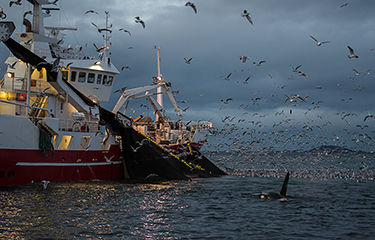ICES advises big cuts to catch of Northeast Atlantic spring spawning herring

The International Council for the Exploration of the Seas (ICES) has advised big cuts to the Northeast Atlantic spring spawning herring stock.
In its advice, published on 29 September, ICES advised that if the long-term management strategy agreed to by the U.K., the Faroe Islands, Iceland, Norway, Russia, and the E.U. is applied, the total allowable catch (TAC) in 2024 should be no more than 390,010 metric tons (MT). That total represents a 44 percent cut compared to the 511,171 MT TAC that the organization set for 2023.
The advised quota decrease is the latest twist in a series of complicated negotiations between the many countries that fish the species. The Marine Stewardship Council suspended certification of all Atlanto-Scandian herring in 2020 after the countries involved failed to agree to a collective quota lower than ICES advice. In 2019, the quota-sharing agreement between the European Union, United Kingdom, Iceland, Faroe Islands, Norway, Russia, and Greenland resulted in 777,165 MT of catch between the participants – 32 percent higher than advised.
For the 2024 season, ICES is advising the fishing pressure on the stock is above the maximum sustainable yield for the species. Adult stock size is declining as the large 2016 year-class – which saw significant recruitment – is aging and subsequent year-classes saw lower recruitment. That year-class will likely dominate the catches in 2024 and make up 45 percent of all the herring fishers catch, “and the subsequent year classes recruiting to the fishery are estimated to be weak," ICES said.
The fishery's catch has been in excess of the advised TAC for a decade.
“There has been an overshoot of the catches in relation to the advised TAC since 2013,” ICES said in its advice. “The advice is based on the target fishing mortality in the long-term management strategy agreed to by the European Union the Faroe Islands, Iceland, Norway, and the Russian Federation; It does not consider the deviations from the long-term management strategy as evident from the sum of declared unilateral quotas.”
Earlier this year, Norway and the E.U. signed three bilateral agreements resulting in a herring quota and fishing-access exchange, some of which resulted in quotas for regions that ICES said should be closed to fishing. All of the coastal states involved reached an agreement on a total quota, but could not agree on its ...
Photo courtesy of Wildestanimal/Shutterstock





Share